
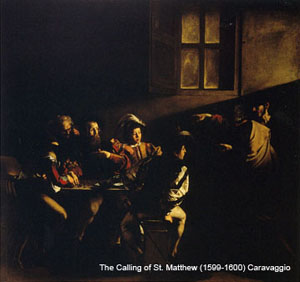
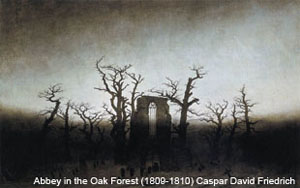
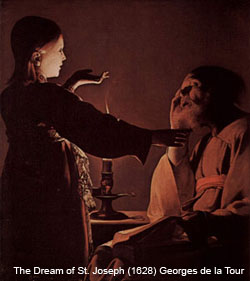
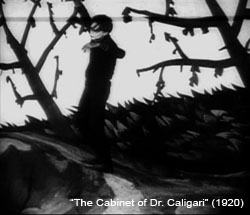
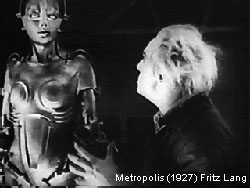
European lighting conventions progressed by looking into the past. Paintings were of great interest to film makers. Masters of painted light such as Rembrandt, Caravaggio, Velasquez, de la Tour and Vermeer were all influential to the development of lighting not only as a technique but as an artistic medium in European films. These painters used differences in tones and colours, brightness and contrast to convey emotion, atmosphere, the geographical signature of place, and even the irreverence force of God or nature. Caravaggio was infamous for his high contrast use of light called chiaroscuro. George de La Tour was the master of candlelight effects, with dark foregrounds, vividly saturated colours, under-glowing faces, reflectance and translucency. One can even spot “eyelights” in his works which became a significant technique in Bladerunner. Vermeer placed figures against the light, and painted soft atmospheric Northern European light. Velazquez’s device of using light in background doorways to direct the viewer’s attention was commonly used in many film noir movies.
Following the examples of these great painters, atmospheric lighting was development in European studios. The first distinct change in lighting convention since the school of naturalism was the use of light as an emotional force. Tones of a scene were modified to reflect the mood or the state of a character’s mind. The second, a much more significant change, is that light became a subject in itself. Following the Second World War, there was great disillusionment towards the use of modern technology. Light was always a symbol of modernity since the First World War, as explained earlier; however, after 1924, it became associated with the pain of the modern city and the questionable authority of the government. It became a double-headed serpent, representing both the world’s insatiable thirst for technology and the irreverence force of nature. Light was very much associated with the war. All electrical power that sustained the streetlights, neon signs and billboards of Berlin were allocated strictly for military use.